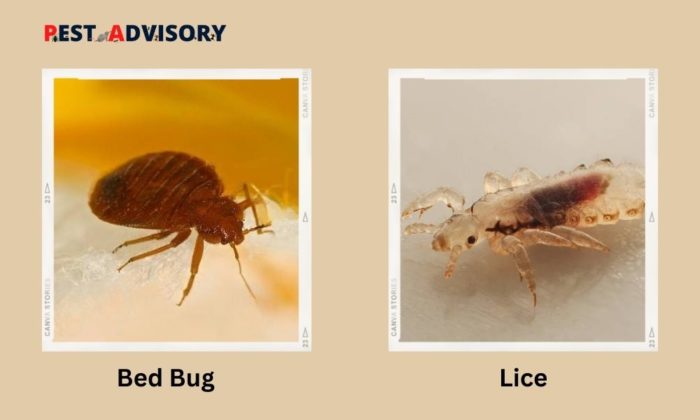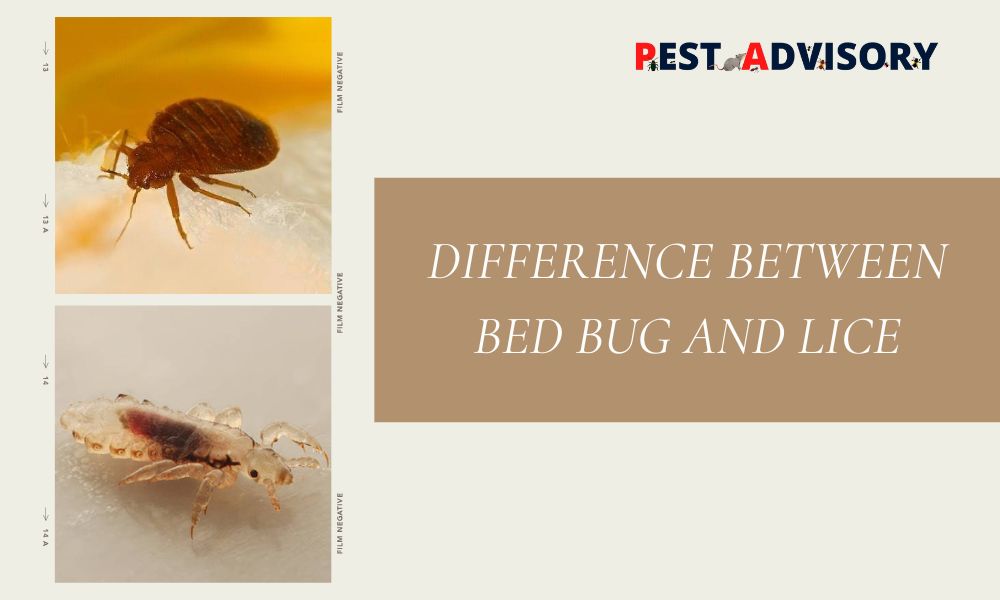Bed bugs leave a trail of panic and anxiety wherever they are present. But what about their often confused doppelganger, lice? Lice are just one of the several insects that look similar to bed bugs and hence, are often confused.
If you are confused about whether you have bed bugs or lice living at your home rent-free, then it is worth reading on, to identify which pest you have, so that you can go ahead with the correct treatment.
Here, we will discuss the difference between lice and bed bugs, their causes and prevention, and the signs of infestation. Without further ado, let’s get started!
What are Bed Bugs and Lice?
Bed bugs are small, brown, oval-shaped, and nocturnal insects that feed on human blood. Their bites cause itching and irritation, but they are not known to spread diseases. They travel into your home along with clothing, luggage, or second-hand furniture.
Lice are a different story. There are three main types of lice in the US- Head lice, Body lice, and Pubic lice, the most common being head lice. Out of the three, only body lice are known to be disease carriers. Lice are parasitic insects and also feed on human blood.
So, what are the similarities between these two pests?
Lice and bed bug nymphs look shockingly similar in appearance. Both bed bugs and lice are dependent on human blood to survive. Both these pests are likely to be transmitted from infested clothing and surroundings, and they cannot fly.
Although both these insects cause physical and mental distress, they are seldom known to spread diseases.
The Difference Between Lice and Bed Bugs
Since lice and bed bugs share similar habits, here is how you can try to differentiate between the two insects based on appearance and habitat.
Appearance
Adult bed bugs are brownish-red with flat and oval-shaped bodies. They have six legs and are about the size of an apple seed, approximately one-fourth of an inch, they swell after taking their meal. Nymphs are usually smaller than adult bugs.
Head lice are translucent, but after feeding, they become brown because the blood is visible through their translucent bodies. They are tiny and six-legged, about one-eighth of an inch.
Bed bugs tend to be bigger than lice. Lice, when un-fed are white or gray, while bed bugs range from reddish-brown to brown or black. Bed bugs are flat and oval, while lice have oblong bodies.
Habitat
As indicated by the name, ‘head lice’, live on the human scalp. They breed and feed there, which means that they are permanent parasites, they do not leave their habitat unless attacked. The body lice live in clothing and attach to the host when a meal is required. Pubic lice live in damp and humid areas, where coarser hair is present on the body.
Bed bugs, however, as the name suggests, live in your mattress, sheets, or pillows. They are adaptable and can also live on other parts of your home such as cabinets, curtains, furniture, or walls. They do not stick to the human body permanently and feed only at night.
But can bed bugs also live or lay eggs in hairs?
The answer is NO! Bed bugs avoid living on or near humans as they dislike our body heat. So, contrary to the popular misconception, bed bugs cannot live in, or stick to human hair.

Prevention of Bed Bugs and Lice Infestation
You must take some necessary precautions for these pests as their infestation can be disturbing and can cause mental distress. So, read further to know what measures you can take for prevention.
Prevention of Bed Bugs
- Inspect your luggage when coming back from a hotel or lodging.
- Use protective mattress covers.
- Keep your home clean and uncluttered to eliminate hiding places of bed bugs.
- Vacuum frequently and dispose of the vacuum bag in an outside trash can.
- Be careful while using laundry facilities as bed bugs can infest your laundry. Check the table on which you are setting your clothes, and use sealed plastic bags for extra precaution.
Prevention for Lice
- DO NOT share a bed, mattress, pillows, couches, sheets, or clothes with an infected person.
- Machine wash and dry your clothes at a high-temperature cycle frequently.
- Vacuum your floor and furniture frequently.
- Avoid head-to-head contact with people on playgrounds, at parties, etc.
- DO NOT share hair-care items such as brushes, clothes, towels, or accessories.
- Bathe regularly, and wash your hair at least once a week.
- Avoid sexual contact with infected persons, until treated.
Signs and Symptoms of Bed Bugs and Lice
If you’re suspecting an infestation, but you cannot tell which pest it is, then we’re here to help you out. Read the following signs of bed bug and lice infestation, so that you can not only identify but also proceed with the right treatment.
Signs of Bed Bugs
- Bug bites on your body, when you wake up in the morning are a very common and easiest sign to identify bed bugs. They are present as red dots in clusters, usually on the upper half of your body.
- Bloodstains on sheets or mattresses. These stains come by accidentally killing the bed bugs in your sleep.
- Red or brown spots on your furniture or walls. These are fecal marks left behind by adult bugs.
- White dots on your bed, corners of furniture, or walls. These white dots are the eggs of bed bugs, usually laid in their hiding places. They are very small but can be spotted with the naked eye.
Signs of Lice
- Intense itching on the scalp, body, or pubic hair.
- Sores on the scalp or body caused by scratching.
- Lice eggs or live bugs move in your hair which is often the reason for the tickling feeling when you move your hair.
- Bite marks around the waist, groin, inner thighs, or pubic area.
Final Words
If you’re only facing a small infestation, a thorough cleaning, sanitizing, and disinfecting of all items and persons in the home, may be enough to stop the spread. But a big infestation will require drastic measures, and most importantly, the right treatment.
Since you know which pest is bothering you and your family, proceed with the right treatment before it’s too late. You can always contact an exterminator for a quick and effective solution, or there are tons of DIY techniques that you may try before reaching out for pest control.
We sincerely hope that you have learned the necessary, and we wish you luck in further treatment!
